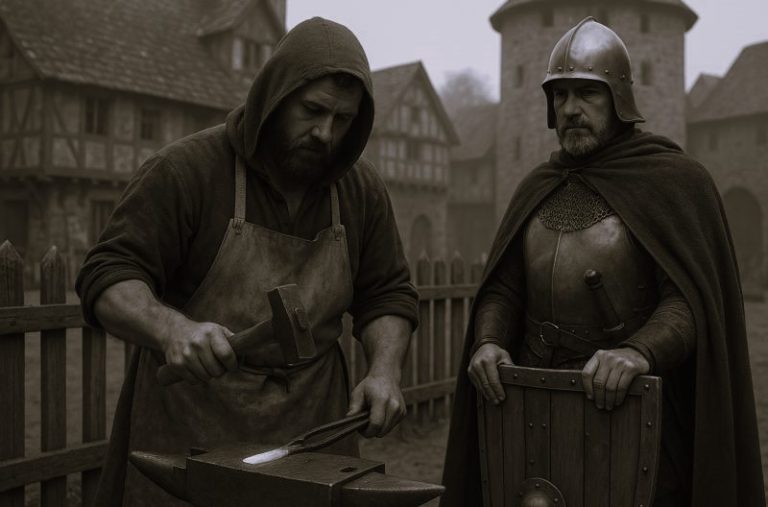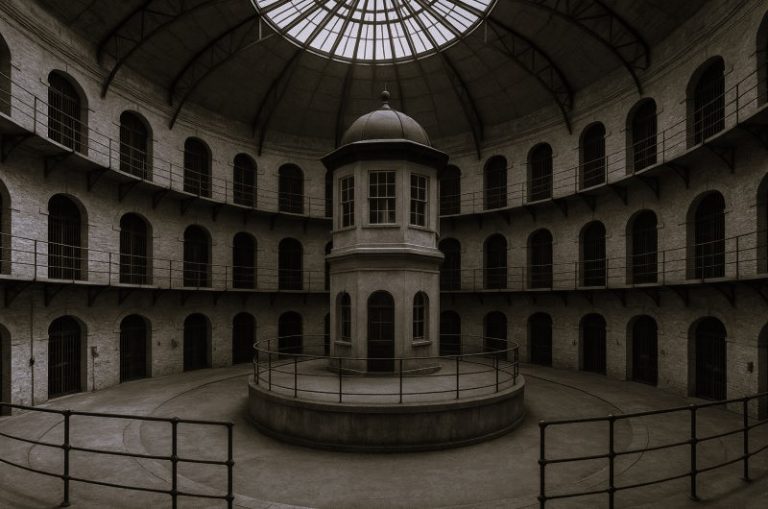People in Medieval England, illustrated here by a section of the Bayeux Tapestry / The Bayeux Tapestry Museum, France
By Dr. Robert Bartlet
Emeritus Professor of History
University of St. Andrews
The East Asian Journal of British History 1 (2011), 1-12
Introduction
“Articles of Union otherwise known as Treaty of Union”, 1707 / Parliament of England
England is unusual in that it has a football team but not an army. The lack of an English army dates back to 1707, when the Act of Union specified that ‘the two kingdoms of England and Scotland’ were to be ‘united into one kingdom by the name of Great Britain’, with consequent alterations to the national flag, the official name of parliament, etc.. The state then became Great Britain, even if loyalties and identities did not immediately and universally fall into line with the legislation. For, of course, for hundreds of years before 1707 England had been England.
It is generally recognized that England attained an unusually early and deep-rooted national unity. This was a product of its medieval development, and can be explored by historians in many different ways, for instance, by studying the establishment of unitary succession to the throne, the emergence of a kingdom-wide tax system or the birth of a national Parliament. The purpose of the present paper, however, is to look at English national identity in the Middle Ages not through such analysis of politics or institutions but from the point of view of culture. Benedict Anderson famously identified nations as ‘imagined communities’, and those communities are given their psychological reality by such things as names, self-image, language, and patron saints, which are the four topics explored here.[1]
The Name England
Depiction of the Venerable Bede (on CLVIIIv) from the Nuremberg Chronicle, 1493 / British Library, London
One of the first and most essential components of identity is a name. And England’s name was not the starting point for its sense of unity but a slow and, in some ways, surprising development.
Any discussion of the origins of England and Englishness has to begin with the work of the great founding father of English historical writing, Bede. Bede’s Ecclesiastical History was completed in 731. It both provides explicit evidence for the diversity of the Germanic settlers in Britain and also offers a unifying concept that transcends the differences. In a classic passage Bede describes how, in the year 449, the ‘race of the Angles or Saxons (Anglorum sive Saxonum gens)’ came to Britain in three longships.[2] The Germanic newcomers, he says, were from three ‘peoples’, Saxons, Angles and Jutes. These ethnic divisions were still recognizable in Bede’s own day: the Saxons of Britain were divided into South, East and West Saxons (giving the territorial names Sussex, Essex and Wessex, still in use today), the Angles into East Angles (giving the name East Anglia), Middle Angles, Mercians and Northumbrians, these last two being geographical designations, meaning ‘those living along the border’ and ‘those living north of the river Humber’ respectively. And some of these divisions were reflected in the political geography. There were kings of the West Saxons, kings of the Mercians, and so on. So the Germanic inhabitants of Britain, who had migrated there from the continent from the fifth century on, neither originated from one place or people nor formed one political unit in their new country.
It might be thought there was little ground here for common group identity. Yet Bede entitled his great history ‘The Ecclesiastical History of the English (or Anglian) people (gens Anglorum)’ and listed the language of the Angles as one of the five languages used in Britain. Hence it seems that, although the Angles are one branch of the Germanic settlers, their name can be used to refer to the whole. This use of ‘Angles’ for the entire body of Germanic settlers occurs not only in Bede’s own writing but also in the letters of Pope Gregory I, some of which Bede cites in his History.[3] Gregory, who sent Christian missionaries to England in 597, consistently refers to the English (or Anglian) people (gens Anglorum) and the ‘church of the Angles’, while Augustine, leader of the mission, is ‘bishop of the Angles’. Pope Gregory never once mentions Saxons. For him, whatever the source of his information, the Germanic settlers of Britain formed one people and were to be organized into one church.
Modern historians have emphasized the importance of this early unifying vocabulary and the subsequent influence of Bede’s views.[4] They point out how early a sense of ‘Englishness’ developed and how little it had to do with political unification, which came only much later. It is an important point that there was available, from the early eighth century, a generic term for all Germanic inhabitants of Britain and that this term pre-dated and was not a consequence of political unification. Given the number of cases where ethnogenesis – the creation of a people – follows the creation of a political unit, the reverse situation in England is worth noting.
When one turns to the period after Bede, the picture is a complex one. Of the three names that Bede applied to the Germanic inhabitants of Britain, that of the Jutes never attained lasting significance but both ‘Angles’ and ‘Saxons’ were in widespread use, both as a self-designation and as a designation by others.
Amongst the native inhabitants of Britain, the Celtic peoples, the terminology applied to their Germanic neighbours and enemies was fairly consistent. Gildas, one of the earliest sources, writing in the sixth century, calls the Germanic newcomers Saxons.[5] The Historia Brittonum, a compilation made in Wales in the early ninth century, does likewise.[6] Asser, who wrote a contemporary Life of king Alfred (871-99) and was himself a Welshman, consistently calls the English language the ‘Saxon tongue’.[7] Modern Welsh ‘Saesneg’ descends from this tradition and the Gaelic ‘Sasunnach’ likewise shows how persistent the ‘Saxon’ identity of the English has been, at least among their enemies and victims.
Self-designation in the eighth and ninth centuries showed no simple pattern. Kings, when not describing themselves simply as ‘king’, used a title referring to the people they ruled over.[8] Charters of these kings refer to them as ‘king of the people of Kent’, ‘king of the Mercians’, ‘king of the West Saxons’, etc. Occasionally there are grandiose experiments in the royal style. One powerful king of Mercia, Æthelbald, in a charter of 736, even termed himself ‘king of Britain’.[9] All this shows quite clearly that the adoption of the term ‘English’ from ‘Angle’ was not the only historical possibility. England might today be called ‘Saxony’.
A very important development with fundamental consequences for ethnic naming was the destruction of all except one of the English kingdoms by the Vikings. In the 860s and 870s Danish armies established their authority in the English kingdoms of the north and east, leaving only the West Saxon dynasty representing the old English regal lines. In 886, according to the Anglo-Saxon Chronicle, Alfred, the West Saxon king, was recognized as ruler of ‘all English people (all Angel cyn) not under subjection to the Danes’.[10] Cyn or cynn is the origin of modern English ‘kin’, meaning family, blood-stock or race, and hence Angelcynn is the vernacular equivalent of gens Anglorum.[11]
There was now only one native dynasty ruling ‘all English people’ not under Scandinavian rule and these people included many Anglian Mercians as well as Alfred’s West Saxons. The new situation is reflected in experiments that Alfred and his advisors made with the royal style in the 880s and 890s. Alongside the old title, ‘king of the West Saxons’, we find ‘king of the Angles and Saxons’ and the composite ‘king of the Anglo-Saxons (rex Angul-Saxonum)’.[12] This composite term, ‘Anglo-Saxon’, which has come to be a standard modern usage both scholarly and popular, obviously met the needs of a king whose subjects included both the West Saxons and the unconquered half of the (Anglian) Mercians.[13] For Alfred and his dynasty it was an umbrella term, covering both new and old subjects.
Over the course of the tenth century, the Wessex kings slowly conquered the territory that had come under Viking control. The political unit that emerged was, in its extent and in its administrative uniformity, something new. The rulers of this new unit had to choose what to call themselves and one can see a range of titles with which they experimented.[14] But the eventual general choice was simple: rex Anglorum – ‘king of the English’. The first king to style himself ‘king of the English’ systematically was Athelstan, the title being first recorded in 928.[15] Thereafter this was the most common regal title. It had the advantage not only of simplicity but also of conformity with the usage in Bede. And now, for the first time, there was a political unit that more or less corresponded in extent with the ‘English people’.
If it was the case that the rulers of Alfred’s dynasty were kings of the Anglian or English people and that the language the Angles spoke was English, when did these ethnic and linguistic terms generate a territorial designation? At what point did the land take its name from its people? The first territorialization of the name in its wider sense, ‘land of the English’ was in the form ‘Angel cynnes land’ – ‘land of the English race or stock’, which occurs in the Anglo-Saxon Chronicle in entries from 787. It was clearly thus possible to label the land where the English lived, even if this involved a phrase rather than a single word. The emergence of single labels for the land, that is, proper names properly so called, Anglia in Latin and Englaland in the vernacular, occurs in the late tenth century. The first use of Anglia appears to be in the Chronicle of Æthelweard, a Latin version of the Anglo-Saxon Chronicle, produced, unusually enough, by an English lay magnate, Æthelweard, in the years 978-988.[16] The author was fond of new terms and Anglia seems to have been one of them. In precisely those same years, the 980s, there is mention of Anglaland in letter of archbishop Dunstan.[17] Englaland occurs for the first time in that form soon afterwards in the treaty between Æthelred II and the Vikings concluded in 994.[18] It is remarkable that the new terminology arose in such a narrowly dateable period.
This new usage survived and spread. Beginning in 1014, references to ‘England’ in the Anglo-Saxon Chronicle are common and the seizure of power by the Danish dynasty of Swein and Cnut in 1014-16 reinforced rather than disrupted this development.[19] While the Danish conquests of the ninth century resulted in a division of the country, those of the eleventh century did not. Cnut declared himself ‘king of all England (ealles Englalandes cyning)’, the first king to do so.[20] So by the eleventh century ‘England’ and ‘English’ were both in use with much the same referents as today.
The process by which England came to be the name of England extended over a long period. With the strong impetus of Bede’s History, but also perhaps through early general vernacular usage, the name of one of the constituent Germanic peoples (Angles) was generalized as a name for them all. With the extinction of all English dynasties except one, members of this dynasty, after various experiments, came to call themselves ‘kings of the English’, even though they were originally kings of the West Saxons. Its speakers called the Germanic language spoken in Britain ‘English’. If the people were ‘English’, the kings ‘kings of the English’ and the language ‘English’, it became natural to call the country ‘the land of the English’ – England.
Self-Image: The English and the Barbaric Celts
Stained glass window showing William, installed in Malmesbury Abbey in 1928 in memory of Rev. Canon C. D. H. McMillan, Vicar of Malmesbury from 1907 to 1919. / Wikimedia Commons
A sense of identity involves a sense of others. Who we are is defined by who we are not (and, often, whom we hate). One of the important developments of the period 1050-1200 was England’s colonial expansion into other parts of the British Isles. As a consequence, the English faced the Welsh, the Scots and the Irish in a new way: they were now in continual and close contact, but often as rulers and ruled, conquerors and conquered. In this environment, the English created a self-image of cultural and moral superiority.
One of the earliest writers to express this sense of the superiority of the English over their Celtic neighbours was the monastic historian William of Malmesbury (himself of mixed English and Norman descent). Writing in the 1120s, he claims that
The soil of Ireland produces nothing good, because of the poverty or rather the ignorance of the cultivators, but engenders a rural, dirty crowd of Irishmen outside the cities; the English and the French, on the other hand, inhabit commercial cities and have a more civilized way of life.[21]
Turning to Scotland, William makes a condescending exception to his generally negative characterization when he discusses King David I, who had intermarried with the Norman aristocracy and spent much time in England: ‘He had from boyhood been polished by contact and fellowship with our people, so that he rubbed off all the rust of Scottish barbarism.’[22]
This is only the beginning of a wave of powerful negative characterizations of the Welsh, Scots and Irish as poor, rural, backward, brutal and irreligious. In part these comments are to be explained by the simple fact that England is richer agriculturally than the other parts of the British Isles, and the English observers were noting a real economic difference, but they also had a clear political function. The colonial expansion could be justified as part of a ‘civilizing process’. When Henry II obtained papal support for his expansion into Ireland, the pope explained that he was giving his approval to the venture ‘so that that barbarous nation may by your efforts become endowed with a more pleasing way of life’.[23]
This colonization process meant that, from the late eleventh century, there were English who left the kingdom of England to settle in Wales or Ireland. They and their descendants were not part of the kingdom of England, because the very important decision was made, or assumed, that this colonization was not to involve an extension of the boundaries of the kingdom of the English. Although the king of England claimed overlordship of Wales and, from 1171, of Ireland, he did not claim that Wales and Ireland were part of the same political territory as England. This only occurred in the Acts of Union of 1536, in the case of Wales, and 1801, in the case of Ireland. But the settlers who went from England to Wales and Ireland in the Middle Ages, and their descendants, even if they were not inhabitants of the kingdom of England, certainly saw themselves as English. Both in Wales and Ireland harsh racial divisions existed. The new lordships established by Anglo-Norman aristocrats and settled by immigrant English farmers and townsmen, erected social and legal barriers between themselves and the native population. Many lordships in Wales were divided into ‘Englishries’ and ‘Welshries’, occupied by the two different groups and with different legal systems, while in Ireland ‘the English born in Ireland’ were to be a vocal political group down the centuries.[24]
In a sense there is nobody more conscious of their identity than travellers, expatriates or exiles. They are outside their own community of birth and upbringing and nothing is more likely to make them sensitive to the differences between themselves and the people around them. In Ireland and Wales the English settler populations tried to hedge themselves around with legal protections designed to maintain and secure their cultural identity. The legislation of the late thirteenth and fourteenth centuries, which prescribed that the English born in Ireland should have English names, speak English and have haircuts in the English style, provides a useful list of the main cultural markers of ethnicity in the Middle Ages (name, language, hairstyle, etc.) but also points to a deep anxiety about loss of identity.[25]
Language
England, 1200-1450 / Wikimedia Commons
Language was widely recognized in the Middle Ages as an important badge or marker of ethnic identity. Lists of the defining features of a people usually included it, alongside such things as dress, legal customs, and methods of waging war. This assumption, that a people could be identified by its language, sat somewhat awkwardly with the fact that most of medieval Europe was, in one sense or another, multi-lingual.
Like most of the rest of Europe, Anglo-Saxon England was familiar with more than one language, since Latin was employed for ecclesiastical and some official purposes. However, one of the distinctive things about Anglo-Saxon England was the extent to which the vernacular was used: for poetry, history, sermons, law-codes, will and charters. This came to a dramatic end after the Norman Conquest of 1066. For several centuries English, while still the native tongue of the vast majority of the population, was in a period of shadow.
The language of the ruling class was French. Henry II, who ruled England for 45 years (1154-89), spoke only French and Latin.[26] Around 1200 an educated cleric could refer to French and Latin as ‘languages which, for us, surpass all others’.[27] Some authors writing in Latin were even unwilling to mention English place-names, lest it give a barbarous taste to their prose. Yet, despite this, English survived and re-emerged as a language of literature and, eventually, of power.
The tension between the high cultural status of French and Latin, on the one hand, and the fact that English was the almost universal mother tongue, on the other, can be seen reflected in a ruling from the General Chapter of the Benedictines of northern England in 1290. The monastic leaders were worried that ‘those who are accustomed to chatter in English, and often are sent to the great men on the business of their monastery’ might be shamed by ‘their lack of good language’ and instructed all the monks to use French or Latin in public.[28] They obviously felt that those who represented them to the aristocracy should be conversant with the high-class languages, not with ‘English chatter’, although they assumed that the latter would be common.
In one sense the Middle Ages was the great period of English internationalism. England was more multi-lingual in the years 1100- 1400 than in any other period of its history. Latin, French and English were all spoken and written, in their differing social and cultural contexts. The royal court looked to its French lands, and to French ladies – most of the queens of England in the medieval period were French. For a period of 398 years (1066-1464) there was in fact not a single queen who had been born in England. But this did not seem to suffocate a sense of English national identity.
Sometimes there were curiously paradoxical results. In the 1250s opposition to the king and some of his policies was led by Simon de Montfort, earl of Leicester. One of his main avowed motives was hostility to the ‘aliens’ who seemed to dominate the court. His supporters praised him as a champion of the English comparable to Moses, the champion of the oppressed Israelites. His army fought ‘for England’.[29] Like the heroes of the Old Testament, ‘Simon de Montfort raised himself up for England’.[30] Yet Simon de Montfort was born in France and was about 25 when he first visited England. He himself was sometimes disillusioned with his English supporters. ‘I have been in many countries’, he is reported to have said, ‘but among no people have I found such disloyalty and deception as I have experienced in England’.[31] This champion of England was not himself English. One of his outspoken advocates saw the curious paradox:
He was no traitor but a most devout servant and a most faithful protector of the church in England, the shield and defender of the kingdom of England, the enemy and expeller of aliens, although he was one of them by birth.[32]
‘An expeller of aliens, although one of them by birth’ – a French-speaker who was regarded at the time, and by many in subsequent generations, as a patriot and champion of English liberty.
Saints and National Identity
Dynastic or community identity could be expressed through the adoption of a particular saint. England provides an interesting example of how national saints could change over the course of time. In the Anglo-Saxon period there were saints whose cults transcended regional boundaries, or who came to transcend them. The Church tried hard to promote the cults of pope Gregory the Great and Augustine of Canterbury, who had initiated the Christian mission to the Anglo-Saxons, and in 747 a council headed by the archbishop of Canterbury ruled that ‘the feast-day of the blessed pope Gregory and also the day of burial of St Augustine the archbishop should be celebrated with honour by all, as is fitting’.[33] These ecclesiastical saints, however, did not win a wide popular following. Gregory’s cult remained ‘primarily a liturgical cult fostered by a clerical elite’.[34]
The saints who gained the most prominent following in later Anglo-Saxon England included several of those murdered kings who made up a distinctive feature of the sanctity of eastern and northern Europe: Edmund, king of the East Angles, killed by Vikings in 869, and Edward ‘the Martyr’, king of England, murdered, probably as a result of a dynastic dispute, in 978. Their cults received official backing. Early in the eleventh century the royal council decided that the feast of Edward, King and Martyr, should be celebrated on 18 March ‘over all England’.[35] After the Norman Conquest of England in 1066, the last ruler of the house of Wessex, Edward ‘the Confessor’, joined this list of national saints. His reign was romanticized as a time of good rule – in 1100 Henry I promised his subjects ‘the law of King Edward’ – and in 1161 Edward became the first English saint to be canonized.[36]
Throughout the years 1100-1400 these English royal saints continued to be an expression of both royal and national identity. When English crusaders helped to capture the city of Damietta in Egypt in 1219, a mosque in the town was converted, in their honour, into a church dedicated to St Edmund the Martyr.[37] Depictions of Edward and Edmund in paintings, illuminated manuscripts and other media were common. Their Englishness was no bar to their veneration by Norman and Angevin rulers whose horizons and ancestry were largely French. Henry III of England (1216-72), whose four grandparents had all been born in France, nevertheless had a deep devotion to St Edward the Confessor, rebuilding the abbey church of Westminster around his shrine, translating his bones to a grand new shrine and naming his eldest son Edward (and his second son Edmund). In this way these Anglo-Saxon personal names, which had been eclipsed after the Norman Conquest, re-entered the lexicon of high-status names.
England thus had revered and long-established native saints. What is rather remarkable is that a new and definitely non-native saint eclipsed them in the later Middle Ages and early modern period. St George began as an entirely fictional martyr saint in the eastern Mediterranean region in the fifth century, the account of whose sufferings was so fantastical (he is executed and miraculously resurrected three times) that it was included in the earliest papal condemnation of apocryphal literature. Yet by the later Middle Ages he was widely regarded as ‘special protector and advocate of the kingdom of England’. Unlike many things attributed to the influence of the crusades, the rise of the cult of St George really does seem to be explained by western crusaders encountering this very popular eastern saint and making him their own patron. It was Edward I, the last English king to go on crusade, who decreed that his troops should wear the red cross of St George as their uniform.[38]
The fourteenth century was a transitional period in the history of the national saints, symbolized by the fact that when Edward III of England repulsed a French attack on Calais in 1349, he enheartened his men with the calls ‘Ha Saint Edward! Ha Saint George!’, invoking both the older and the newer heavenly patron.[39] When he founded the Order of the Garter, its patrons included both Edward the Confessor and George, although the latter grew to overshadow the former. There is still some parity between the old saints and the new in the reign of Edward III’s grandson, Richard II. The most famous artistic product from Richard’s reign, the Wilton Diptych, shows the young king kneeling before the Virgin Mary, with his saintly sponsors behind him. They are Edmund, King and Martyr, Edward the Confessor, and John the Baptist. Yet the Ordinances of War that were drawn up for Richard’s Scottish campaign of 1385 prescribe that every soldier in his army ‘should bear a large badge of arms of St George, before and behind’ and that any of the enemy wearing such a badge, presumably to disguise themselves, were to be killed.[40]
Eventually St George’s position became undisputed. The great English victory of
Agincourt in 1415 was won under the invocation of the names of Jesus, Mary and George.[41]
In January 1416 the Archbishop of Canterbury decreed that the feast of St George, who is
described as ‘special patron and protector of the English nation’, be celebrated at a higher level
of solemnity throughout the province of Canterbury.[42] Thereafter George’s position as the
national saint of England was assured, even beyond the great chasm of the Reformation.
Elizabethan playgoers could thrill to the war-cry in Shakespeare’s Henry V: ‘God for Harry,
England and St George!’
The earlier national saints, Edmund, King and Martyr, and Edward, King and Martyr, were rulers who had suffered an innocent death, while Edward the Confessor was revered for his perpetual virginity. None had a reputation as a winner in war. This is perhaps what St George provided. Although technically a martyr, George was uniformly portrayed as a knight, fighting dragons and saving maidens. That is what the martial classes of later medieval England seem to have wanted.
So these are my four perhaps paradoxical conclusions:
- ‘Englishness’ pre-dated ‘England’; national identity helped shape the political unit rather than being simply a consequence of it.
- A sense of English superiority was created during the colonial expansion of the English in the British Isles, even though this was after the English themselves had been subjected to a foreign aristocracy.
- English national identity developed strongly in the very period when the English language was at its lowest ebb in terms of social prestige and literary production.
- The English replaced their own native patron saints with an imported and originally exotic patron saint, largely because of his martial reputation.
Notes
- Benedict Anderson, Imagined Communities: Reflections on the Origin and Spread of Nationalism, London 1983.
- Bede, Historia ecclesiastica gentis Anglorum 1. 15, ed. and tr. Bertram Colgrave and R. A. B. Mynors, Ecclesiastical History of the English People, Oxford 1969, 50.
- There are sixteen letters in Gregory’s Register that mention Angli: Gregory I, Registrum epistolarum VI, 10, 49, 57; VIII, 29; IX, 213, 222; XI, 35, 36, 37, 39, 41, 47, 48, 50, 51, 56, ed. Paul Ewald and Ludo Hartmann, Monumenta Germaniae historica, Epistolae 1-2, 2 vols., Berlin 1887-99, I, 388-9, 423-4, 431-2; II, 30-1, 198-200, 213-14, 304-5, 305-8, 308-10, 311-13, 314-15, 319-20, 320-1, 322-3, 323-4, 330-1. They range in date from 595 to 601 and include casual references in letters to widely dispersed correspondents as well as letters to the principals, Augustine, Mellitus, Ethelbert and Bertha. Registrum XI, 56a, ed. Ewald and Hartmann, II, 331-43, is not found in the Register but is taken from Bede’s Historia ecclesiastica 1. 27, ed. Colgrave and Mynors, 78-102, and consists of the so-called Libellus responsionum, Gregory’s advice to Augustine on
missionary tactics. - H. E. J. Cowdrey, ‘Bede and the ‘English People’’, Journal of Religious History 11, 1980-1, 501-23; Michael Richter, ‘Bede’s Angli: Angles or English?’ Peritia 3, 1984, 99-114; Patrick Wormald, ‘Bede, the Bretwaldas and the Origins of the Gens Anglorum’, in Ideal and Reality in Frankish and Anglo-Saxon Society: Essays presented to J. M. Wallace-Hadrill, ed. Patrick Wormald, Donald Bullough and Roger Collins, Oxford, 1983, 99-129; idem, ‘Engla Lond: The Making of an Allegiance’, Journal of Historical Sociology 7, 1994, 1-24; idem, ‘The Venerable Bede and the ‘Church of the English’’, in The English Religious Tradition and the Genius of Anglicanism, ed. Geoffrey Rowell, Wantage, 1992, 13-32.
- Gildas, De excidio Britanniae 23. 1, ed. Theodor Mommsen, Monumenta Germaniae historica, Auctores antiquissimi 13, Berlin 1898, 25-85, at 38.
- Historia Brittonum, ed. Theodor Mommsen, ibid., 111-222, at 147, 158, 172.
- Asser, De rebus gestis Aelfredi Regis, ed. William Henry Stevenson, Asser’s Life of King Alfred, Oxford 1904, 7, 19, 20, 37, 50, 58, 59, 62, 68, 75, 94.
- See Barbara Yorke, ‘The Vocabulary of Anglo-Saxon Overlordship’, Anglo-Saxon Studies in Archaeology and History 2, British Archaeological Reports, British Series 92, 1981, 171-200; Anton Scharer, ‘Die Intitulationes der angelsächsischen Könige im 7. und 8. Jahrhundert’, in Intitulatio III: Lateinische Herrschertitel und Herrschertitulaturen vom 7. bis zum 13. Jahrhundert, ed. Herwig Wolfram and Anton Scharer, Mitteilungen des Instituts für Österreichische Geschichtsforschung, Ergänzungsband 29, Vienna, etc. 1988, 9-74.
- P. H. Sawyer, Anglo-Saxon Charters: An Annotated List and Bibliography, London 1968, no. 89.
- The Anglo-Saxon Chronicle: a collaborative edition 3, MS A, ed. Janet Bately, Woodbridge 1986, 53.
- See Sarah Foot, ‘The Making of Angelcynn: English Identity before the Norman Conquest’, Transactions of the Royal Historical Society 6th ser. 6, 1996, 25-49.
- See the concise summary in Alfred the Great: Asser’s Life of King Alfred and other contemporary sources, ed. Simon Keynes and Michael Lapidge, Harmondsworth 1983, 227-8.
- On the term see especially Susan Reynolds, ‘What do we mean by ‘Anglo-Saxon’ and ‘Anglo-Saxons’?’ Journal of British Studies 24, 1985, 395-414.
- Harald Kleinschmidt, ‘Die Titulaturen englischen Könige im 10. und 11. Jahrhundert’, in Intitulatio III, 75-129.
- Sawyer, Anglo-Saxon Charters, nos. 399-400.
- Æthelweard, Chronicon, ed. A. Campbell, London 1962, 9.
- Sawyer, Anglo-Saxon Charters, no. 1296; Councils and Synods with Other Documents relating to the English Church 1, 871-1204, ed. D. Whitelock, M. Brett and C. N. L. Brooke, 2 vols., Oxford 1981, I, 170, no. 35. II.
- II Æthelred 1, ed. Felix Liebermann, Die Gesetze der Angelsachsen, 3 vols., Halle 1898-1916, I, 222, there dated to 991; references to England in Skaldic verse may be earlier, and possibly influential on English usage, but there are major problems in dating the material.
- Apparent earlier references in the E version, sub anno 675 and 785, are either certainly or probably interpolations: The Anglo-Saxon Chronicle: a collaborative edition 7, MS E, ed. Susan Irvine, Cambridge 1984, 31-2, 41.
- I Cnut, prologue, ed. Liebermann, Gesetze, I, 278.
- William of Malmesbury, Gesta regum Anglorum 5. 409, ed. R. A. B. Mynors, R. M. Thomson and M. Winterbottom, 2 vols., Oxford 1998-9, I, 738.
- Ibid. 5. 400, ed. Mynors et al., I, 726.
- Gerald of Wales (Giraldus Cambrensis), Expugnatio Hibernica 2. 5, ed. A. B. Scott and F. X. Martin, Dublin 1978, 146.
- R. R. Davies, Conquest, Coexistence and Change: Wales 1063-1415, Oxford 1987 (reissued as The Age of Conquest: Wales, 1063-1415); idem, Domination and Conquest: The Experience of Ireland, Scotland and Wales 1100-1300, Cambridge, 1990; Robin Frame, ‘’Le Engleys Nées en Irlande’: The English Political Identity in Medieval Ireland’, Transactions of the Royal Historical Society 6th ser. 3, 1993, 83-103.
- Robert Bartlett, The Making of Europe: Conquest, Colonization and Cultural Change 950-1350, Harmondsworth 1993, 239; idem, ‘Symbolic Meanings of Hair in the Middle Ages’, Transactions of the Royal Historical Society 6th series, 4, 1994, 43-60, at 45-6.
- Walter Map, De nugis curialium 5. 6, ed. M. R. James, revised by C. N. L. Brooke and R. A. B. Mynors, Oxford 1983, 476.
- Gerald of Wales (Giraldus Cambrensis), Speculum Duorum, ed. Yves Lefèvre and R. B. C. Huygens, Cardiff 1974, 132.
- ‘Documents illustrating the activities of the General and Provincial Chapters of the English Black Monks, 1215-1540’, ed. William A. Pantin, Camden Third Series 45, 1931, 260.
- The Song of Lewes, ed. C. L. Kingsford, Oxford 1890, 3-4.
- Walter of Guisborough, Chronicle, ed. Harry Rothwell, Camden Third Series 89, 1957, 185.
- The Chronicle of William de Rishanger of the Barons’ Wars, ed. James Orchard Halliwell, Camden Original Series 15, 1840, 17-18.
- Chronicle of Melrose, ed. A.O. Anderson and M.O. Anderson, London, 1936, 195.
- Councils and Ecclesiastical Documents relating to Great Britain and Ireland, ed. Arthur West Haddan and William Stubbs, 3 vols. in 4, Oxford 1869-78, III, 368.
- Alan Thacker, ‘Peculiaris patronus noster: The Saint as Patron of the State in the Early Middle Ages’, in The Medieval State: Essays presented to James Campbell, ed. J. R. Maddicott and D. M. Palliser, London 2000, 1-24, at 19.
- V Aethelred 16, 1 Canute 17. 1, ed. Liebermann, Gesetze I, 240-1, 298-9.
- Ibid., 522; Frank Barlow, Edward the Confessor, London 1970, 256-85.
- Walter of Coventry, Memoriale, ed. William Stubbs, 2 vols., Rolls Series 1872-3, II, 242.
- Jonathan Good, The Cult of St George in Medieval England, Woodbridge 2009, 53, citing PRO E 101/3/15.
- Thomas Walsingham, Historia Anglicana, ed. H. T. Riley, 2 vols., Rolls Series 1863-4, I, 274.
- Monumenta Juridica: The Black Book of the Admiralty I, ed. Travers Twiss, Rolls Series 1871, 456.
- Gesta Henrici quinti 12, ed. Frank Taylor and John S. Roskell, Oxford 1975, 84.
- The Register of Henry Chichele, Archbishop of Canterbury, 1414-1443, ed. E. F. Jacob, 4 vols., Canterbury
and York Society 42, 45, 46, 47, 1938-47, III, 8-10; Gesta Henrici quinti 18, ed. Taylor and Roskell, 132.














